Today Current Affairs: 15th July 2022 for UPSC IAS exams, State PSC exams, SSC CGL, State SSC, RRB, Railways, Banking Exam & IBPS, etc
Table of Contents
Fertilizers Flying Squad:

Department of fertilizers has instituted a dedicated officer known as a ‘fertilizer flying squad’ to check any diversion, black marketing or adulteration of fertilizers.
- About 10 lakh tonnes (the worth around 6000 cr) of agriculture-grade urea (despite the need for coating) is getting diverted for industrial use every year.
- The subsidized urea is getting diverted mainly to industries.
- The agriculture-grade urea is neem-coated while technical-grade urea is not.
- The neem-coating is removed through some chemical process and then the urea is used for industrial purposes
- India’s annual domestic demand for urea is around 350 lakh tonnes, of which 260 lakh tonnes are locally produced while the remaining is imported.
- The government’s annual fertiliser subsidy bill is likely to be around Rs 2.5 lakh crore during this fiscal because of high international prices.
- There is an annual requirement of around 13-14 lakh tonnes of technical-grade urea for industrial usage, of which only 1.5 lakh tonnes are produced in the country.
- Urea is used in various industries such as resin/glue, plywood, crockery, moulding powder, cattle feed, dairy and industrial mining explosives.
Facial Recognition Technology:
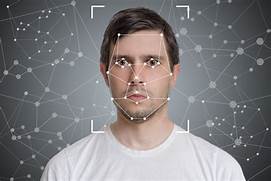
Two retail chains in Australia, Bunnings and Kmart, are being investigated for using facial recognition technology and storing data of their customers without their knowledge.
- Facial recognition technology works by capturing people’s faces from photographs or video footage as a unique faceprint.
- The image is then saved and can be compared to other faceprints stored in a common database.
- While this technology can help verify a person’s face, it also raises several privacy issues.
- In India Telangana police launched their own facial recognition facility (2018)
- Ministry of Civil Aviation’s “DigiYatra” has used the facial recognition system at Hyderabad Airport
- NCRB’s Crime and Criminal Tracking Network & Systems (CCTNS) uses automated facial recognition
Mechanism To Settle Trade Payments In Indian Rupee : RBI
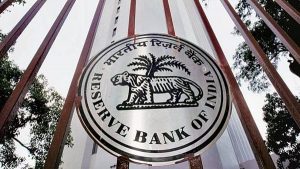
RBI has set up a mechanism to settle trade payments in Indian rupee.
- The central bank has put in place this additional arrangement for invoicing, payment, and settlement of exports and imports in rupee.
- The move is aimed at promoting growth of global trade with emphasis on exports from India and to support the increasing interest of global trading community in Indian rupee.
- Before putting in place this mechanism, authorized dealer banks were required to take prior approval from the Foreign Exchange Department of RBI.
- Under the framework, all exports and imports may be denominated and invoiced in rupee.
- Authorized Dealer (AD) banks in India have been permitted to open rupee Vostro accounts.
- Accordingly, for settlement of trade transactions with any country, AD bank in India may open special rupee Vostro accounts of correspondent banks of the partner trading country.
International Child Sexual Exploitation (ICSE) Initiative:

India’s Central Bureau of Investigation has joined the Interpol’s International Child Sexual Exploitation (ICSE) initiative.
- This will allow it to collaborate with investigators in other countries for detecting child sex abuse online and identifying abusers, victims, and crime scenes from audio-visual clips using specialised software.
- Interpol is the world’s largest international police organisation with 195 member countries, and is headquartered in Lyon, France.
- Each member country hosts an Interpol National Central Bureau that connects their national law enforcement to it and in India, the CBI is that nodal agency.
- The ICSE database uses video and image comparison to analyse Child Sex Exploitation Material (CSEM) and make connections between victims, abusers and places.
- As of July 2022, over 30,000 victims of child abuse and over 13,000 criminals have been identified by the Interpol using this database and software.
- India is the 68th country to have access to this database and software.
- Interpol’s website said that on average, the database helps identify seven child victims everyday globally.
Genomics Democracy:
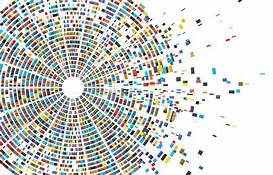
The World Health Organization’s Science Council, in its first report, has called for accelerating access to genomics across the world.
- The report argues that it is not justifiable ethically or scientifically for countries with lesser resources to gain access to such technologies long after the rich countries do.
- The field of genomics tries to use human genetic material to study and research cures and treatments for medical conditions, and is used in a wide range of applications in animal sciences, and agriculture.
- After the WHO constituted the Science Council of experts in April 2021 to provide guidance on the science and research strategy of the organisation, it identified genomics as the focus of its first report.
- The report calls for expanding access to genomic technologies, particularly in low- and middle-income nations, by addressing shortfalls in financing, laboratory infrastructure, materials, and highly trained personnel.
HPV Vaccine : Cervical Cancer

Cervavac, a vaccine developed by the Serum Institute of India (SII), has recently acquired market authorization from the Drugs Controller General of India (DGCI).
- It is India’s first Quadrivalent Human Papillomavirus Vaccination (qHPV) designed to protect women from cervical cancer.
- Cervical cancer is a prevalent sexually transmitted infection.
- It’s a type of cancer that occurs in the cells of the cervix, the lower part of the uterus that connects to the vagina.
- It is mostly caused by long-term infection with particular forms of HPV.
- It is the second most prevalent cancer form and the second leading cause of cancer death in women of reproductive age (15-44).
- According to the World Health Organization’s International Agency for Research on Cancer, India accounts for roughly one-fifth of the global burden, with 1.23 lakh cases and around 67,000 fatalities every year.
- This Vaccine is based on VLP (Virus-Like Particles), similar to the Hepatitis B vaccination, and gives protection by producing antibodies against the HPV virus’ L1 protein.
- It is said to be effective against four strains of the virus – Type 6, Type 11, Type 16 and Type 18.
- A quadrivalent vaccine is a vaccine that works by stimulating an immune response against four different antigens, such as four different viruses or other microorganisms.
- It has a significant potential to eliminate cervical cancer and it would be helpful if it will be included in national HPV vaccination efforts and offered at a lower cost than existing vaccinations.
- Existing Two vaccines licensed globally are available in India — a quadrivalent vaccine (Gardasil, from Merck) and a bivalent vaccine (Cervarix, from GlaxoSmithKline) and are costly and none of them are included in the national immunization program.
- After the DGCI approval, it would enable the government to procure vaccines in bulk in order to vaccinate around 50 million girls aged between 9 to 14 years.
- The vaccine is extremely effective only when it’s administered before the first sexual intercourse.
Acharya Prafulla Chandra Ray:
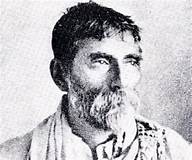
Ministry of Culture organised a curtain raiser for two days International Conference on the “Contributions of Acharya Prafulla Chandra Ray as a Chemist and Freedom Fighter” at the Department of Chemistry, Delhi.
- The Conference will be held on the 161st birth anniversary of Acharya Prafulla Chandra Ray on 2nd-3rd August 2022, under the aegis of Azadi Ka Amrit Mahotsav.
- The Department of Chemistry is celebrating its centenary year along with the University of Delhi and Vijnana Bharti (VIBHA) is going to organize jointly with Indraprastha Vigyan Bharti, New Delhi and the Ministry of Culture, Government of India, New Delhi.
- Objective:
- Expand the legacy and contribution of Acharya Prafulla Chandra Ray in Society, with an aim to increase general awareness and background of ancient chemistry along with its importance.
- It is unexpected that the government is updating the education system from the traditional concept of the 1980’s to align with the aspirational goals of 21st century education including SDG4 (Quality Education), while building upon India’s traditions and value systems.
Acharya Prafulla Chandra Ray:
- Known as “Father of Indian Chemistry”, Prafulla Chandra Ray (1861-1944) was a well-known Indian scientist and teacher and one of the first “modern” Indian chemical researchers.
- Originally trained at the University of Edinburgh, he worked for many years at Presidency College in Calcutta and then at Calcutta University.
- He discovered the stable compound Mercurous Nitrite in 1895.
- The British Government first honored him with the imperial title of CIE (Companion of the Indian Empire), and then with the Knighthood in 1919.
- In 1920, he was elected General President of the Indian Science Congress.
- As a nationalist he also wanted the Bengalis to come up in the world of enterprise.
- He himself set an example by establishing a chemical firm called the Bengal Chemical and Pharmaceutical Works (1901).
- He was a true rationalist and was completely against the caste system and other irrational social systems.
- He persistently carried on this work of social reformation till he passed away.
- A postage stamp was issued on him by India Post on 2nd August 1961 to commemorate his Birth Anniversary.
Global Gender Gap Index, 2022:

India ranks 135 among a total of 146 countries in the Global Gender Gap Index, 2022, released by the World Economic Forum. In 2021, India ranked 140 out of 156 nations.
- The country is the worst performer in the world in the “health and survival” sub-index in which it is ranked 146.
- The Global Gender Report, 2022, which includes the index, says it will now take 132 years to reach gender parity, with the gap reducing only by four years since 2021 and the gender gap closed by 68.1%.
- India ranks 146 in health and survival, 143 in economic participation and opportunity, 107 in educational attainment and 48 in political empowerment.
- The report notes that India’s score of 0.629 was its seventh-highest score in the past 16 years.
- India ranks poorly among its neighbours and is behind Bangladesh (71), Nepal (96), Sri Lanka (110), Maldives (117) and Bhutan (126). Only the performance of Iran (143), Pakistan (145) and Afghanistan (146) was worse than India in South Asia.
- The Global Gender Gap Index benchmarks gender parity across four key dimensions or sub-indices — economic participation and opportunity, educational attainment, health and survival, and political empowerment.
- It measures scores on a 0-to-100 scale, which can be interpreted as the distance covered towards parity or the percentage of the gender gap that has been closed.
India Has Achieved Clean Energy Targets:

India has achieved clean energy targets nine years ahead of schedule, Union Power Minister R.K. Singh said at the Sydney Energy Forum in Sydney.
- India has installed 162 GW (1 GW is 1,000 MW) of renewable energy capacity, which is 41% of the 402 GW of electricity installed.
- “We reached this target on November 2021 and what our Prime Minister did was ask us to raise our ambition and so in Glasgow (at the UN COP-21) our Prime Minister committed to installing 500 GW of renewable energy by 2030, which would then be 50% of the installed capacity.” Mr. Singh said.
- In 2015, India committed to ensuring that 40% of its energy would be from renewable sources by 2030 as part of its Nationally Determined Contributions (NDC).
Sydney Energy Forum:
- Ministers from the United States, Japan, India, Indonesia, and the Pacific Island nation of Samoa are attending the forum along with leaders of major companies that are committed to low emissions technologies.
- The forum will “foster connections between investors, business and government with a focus on innovations in key clean energy technologies such as solar, hydrogen, critical minerals and batteries”.
District Climate Change Missions:
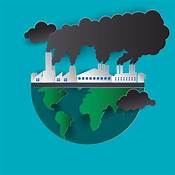
The Tamil Nadu government has established District Climate Change Missions in all 38 districts.
- The missions will be headed by the Collectors as Mission Directors.
- The District Forest Officers will function as Climate Officers.
- The missions will help strengthen the government’s climate response at the grassroots, said Supriya Sahu, Additional Chief Secretary, Department of Environment, Climate Change and Forest.
- The missions will create strong policy support across all sectors of governance, devise strategies to reduce greenhouse gas emissions and bench-mark industries to move towards green manufacturing.
- They will also promote eco-friendly technologies, such as solar and wind energy technologies, biodegradable packaging and e-vehicles.
- The Collectors will have to prepare district-level climate change mitigation and adaptation plans, build capacity and provide inputs for low-carbon, climate-resilient development plans.
- Another key deliverable is strengthening the ‘Meendum Manjappai’ campaign against the use of single-use plastics.
- The Collectors will also work towards strengthening Climate Smart Villages and creating bio-shields in coastal areas.
- The government has initially sanctioned ₹3.80 crore for 38 district missions which will function under the supervision of the Tamil Nadu Climate Change Mission.
First I2U2 (India-Israel-UAE-USA) Leaders Virtual Summit:
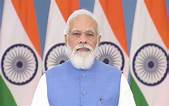
Prime Minister Narendra Modi will participate in the First I2U2 (India-Israel-UAE-USA) Leaders’ Virtual Summit on July 14, 2022 along with his Israeli counterpart Yair Lapid, UAE President Mohammed bin Zayed Al Nahyan and the US President Joe Biden.
- The Leaders will discuss the possible joint projects within the framework of I2U2 as well as the other common areas of mutual interest to strengthen the economic partnership in trade and investment in the respective regions and beyond.
- The I2U2 Grouping was conceptualized during the meeting of the Foreign Ministers of the four countries held on 18th October last year.
- Each country also has Sherpa-level interactions regularly to discuss the possible areas of cooperation.
- I2U2 is aimed to encourage joint investments in six mutually identified areas such as water, energy, transportation, space, health, and food security.
- It intends to mobilize private sector capital and expertise to help modernize the infrastructure, and low carbon development pathways for the industries, improve public health, and promote the development of critical emerging and green technologies.




